We have grown up hearing about the Bougainvillea plant. From its stunning-looking flowers to the immaculate foliage that surrounds the plant, it is a public favorite among gardeners. But despite being a resilient plant, several factors can stunt its growth exponentially.
One of the most common issues with the bougainvillea plant is the gradual yellowing and dropping of the leaves. But the question is, “Why does it happen?”
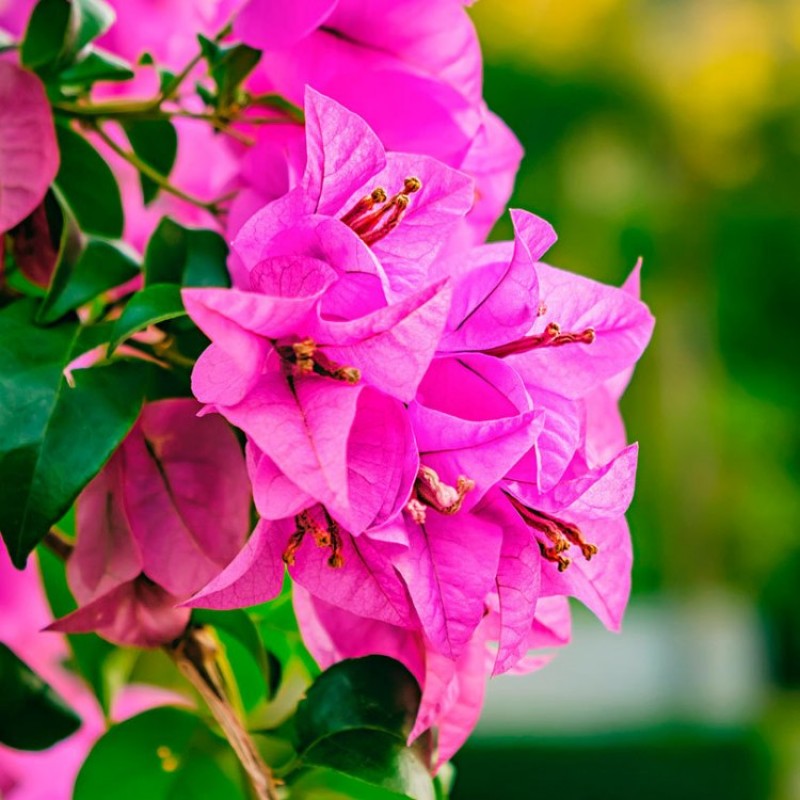
To be fair, there are several contributing factors behind this issue, which we will talk about in detail in this article.
Why is the Bougainvillea Leaves Dropping?
From sudden changes to the weather conditions to lack of proper nutrition, the bougainvillea leaves will first start turning yellow, following which it droops and falls off the plant.
If you are witnessing sudden deterioration and you aren’t aware of what’s causing it, the following are some of the reasons you should look out for:
1. Cold temperature
Unlike most other flowering plants, bougainvillea plants need hot and humid temperature conditions to grow optimally. They love warmer temperatures, which is one of the reasons why a sudden drop in the temperature directly affects the plant.
This is one of the reasons why the plant doesn’t grow optimally in winter conditions. In extremely cold temperatures, the leaves start turning yellow and then droop and fall off the tree. This is often considered a common cycle of growth.
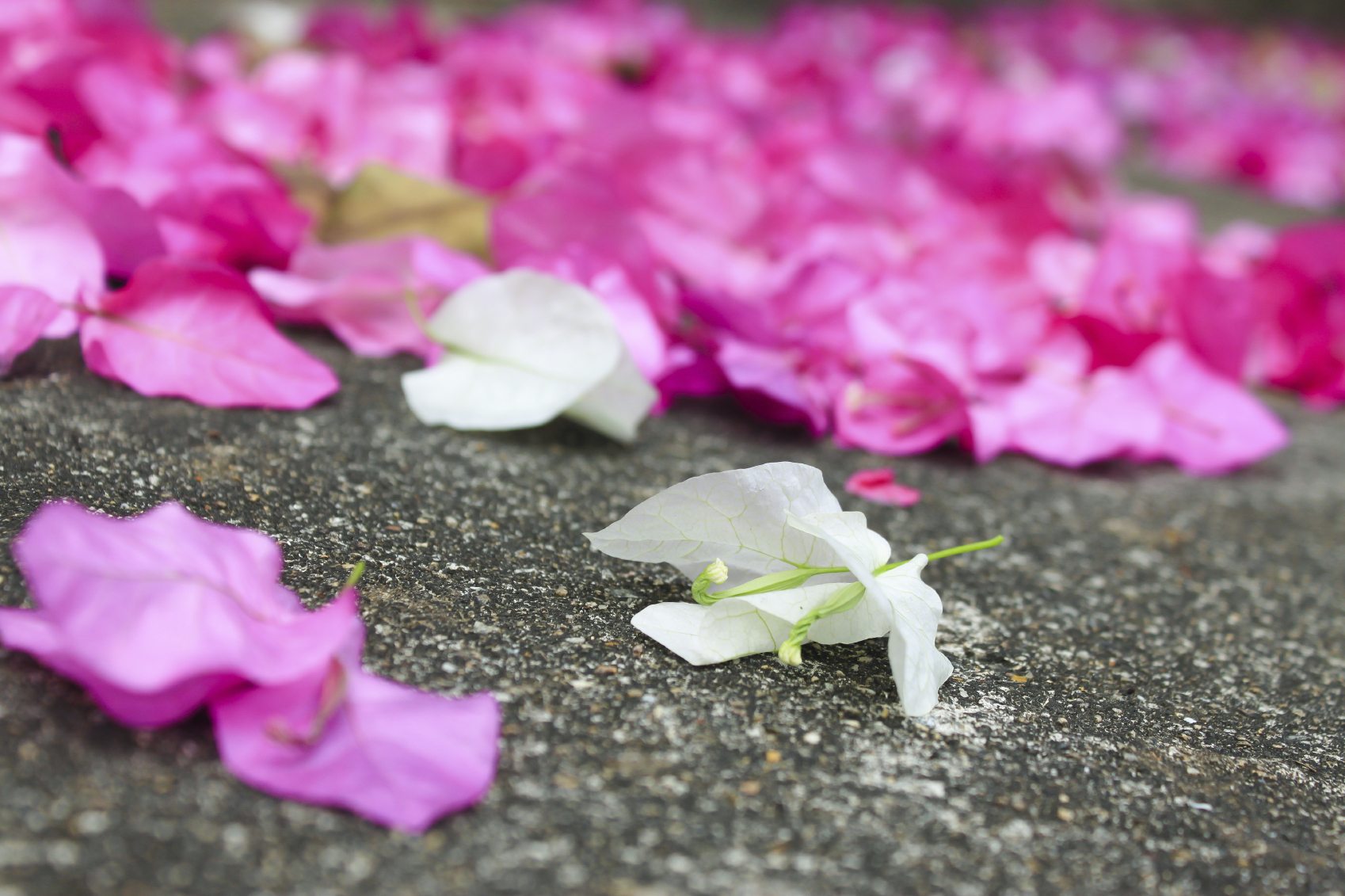
So, if you notice the same issue happening during the winter months, there’s not much you can do about it other than waiting for the summer months to return.
How to fix it?
If you have your bougainvillea leaves placed in the pots, we’d recommend that you bring the pots indoors. Ideally, you want to ensure that you keep a check on the temperature. If it drops to 10 degrees, that’s where you need to bring them in.
Even in the dormant period during the winter months, you need to water the plant continually. Doing so ensures that the plant will grow without any compromise.
Another effective control and protective measure are to do mulching. Spread around 3-4 inches of much around the bougainvillea plant and cover the same with some newspapers. This should protect the plant against unnecessary damage.
2. Under watering the plant
Watering is no doubt one of the most important growing parameters. Since the bougainvillea plant has higher growth potential in drier and hot climates, it isn’t surprising that they don’t need a lot of water. They are drought resistant to an extent but that doesn’t mean that you can completely forego watering.
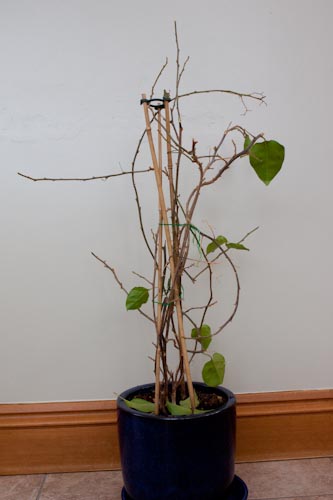
Under watering is one of the most common reasons behind the drooping and damaged leaves in the bougainvillea plant. Complete loss of water will lead to stunted growth and might end up preventing the foliage and flowers to grow into their vibrant form.
How to fix it?
One of the easiest fixes for this issue is to check the water levels. You can do so using a moisture meter or manually feel the soil’s top layer. If the soil is dry and cracked, it indicates that the soil and the plant need re-watering. However, if the soil is moist to touch, you can avoid rewatering.
3. Overwatering the plant
Even during the summer months, noticing the leaves drooping and dropping could be a sign of overwatering as well. The bougainvillea plant doesn’t require too much water and if left in the water-logged soil, the plant can eventually end up dying due to root rot or other complications.
The only way to overcome the issue in such cases would be by taking immediate measures to prevent overwatering. If you notice the leaves turning yellow from the edges, it is a sign of overwatering.
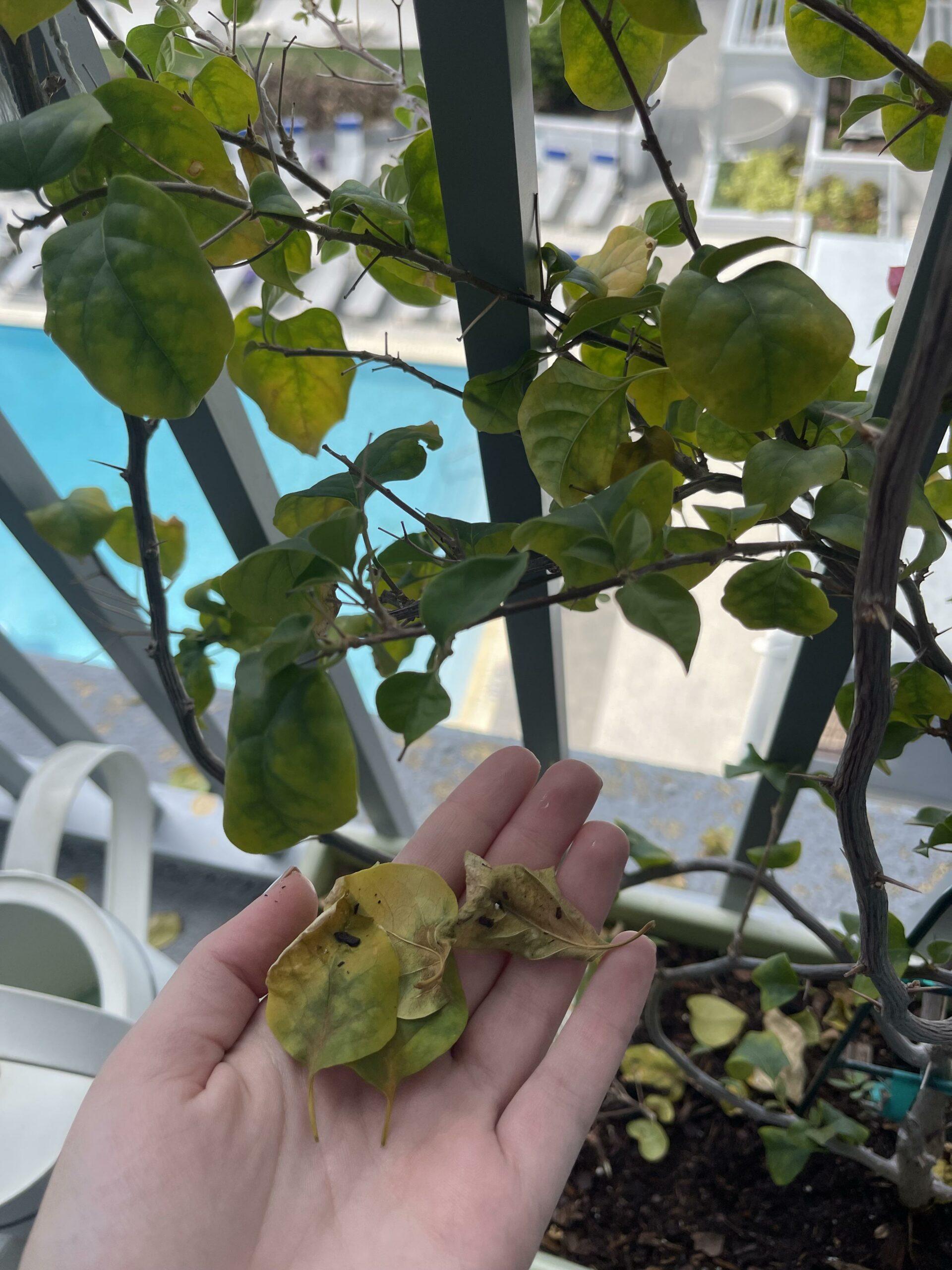
Also, if there is excess water in the soil, it can directly stagnate the roots, leading to a lack of nutrient absorption into the plant, which leads to the yellowing and dropping of the leaves.
How to fix it?
Much like how you fix under watering, even for overwatering, you need to assess the moisture levels first. Check the soil’s water level manually or use a soil moisture meter. Once you have a good enough idea about the soil’s water quality, you can decide if it’s the right time to rewater the soil and the plant or not.
Your aim should be watering up to 1-2 inches every week. If the weather isn’t too hot, this level of water should be enough to get the plant through the week, before it’s time to rewater again.
4. Lacking sunlight
Sunlight exposure is very important when it comes to the growth of the bougainvillea plant. Like the hot and warmer temperatures, the bougainvillea plant also needs around 5 hours of constant sunlight exposure for optimal growth.
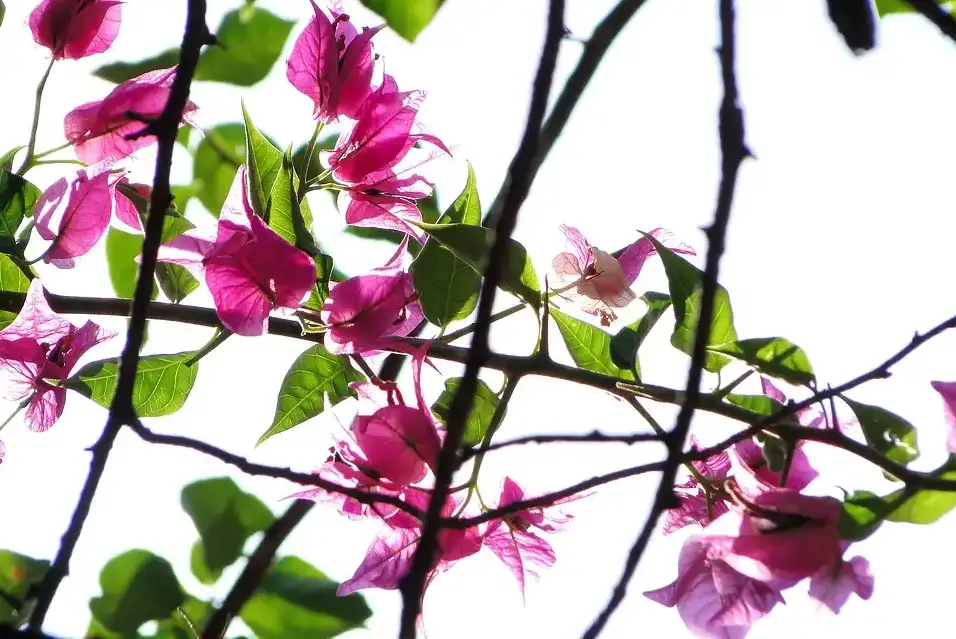
If you have a pot of bougainvillea plants in the shady areas in the garden and the leaves are yellowing, it is a sign that the plant isn’t getting enough sunlight throughout the day. So, what we’d recommend you do is shift the plant to areas where it gets direct sunlight.
How to fix it?
As the most logical fix would be, you need to shift your potted bougainvillea plant to an area where it gets direct sunlight for 5-6 hours without any compromise. Doing this for a few days should fix the issue without any hassle at all.
5. Environmental stress factors
External stress is another reason that could contribute to the bougainvillea leaves dropping. These include heavy wind, insects, pests, or even excess flooding that was unexpected in the area. Since the bougainvillea plant has very specific growth requirements, any kinds of a sudden change to these factors will directly impair the plant’s growth for the worse.
Heavy rainfall and win are the two biggest antagonists to the plant’s growth. You don’t want the plant to be exposed to any of these factors at all. Also, check for root rots that can happen after heavy rainfall. If you notice something like that, take immediate measures to prevent further spread and protect the plant’s growth in the long run.
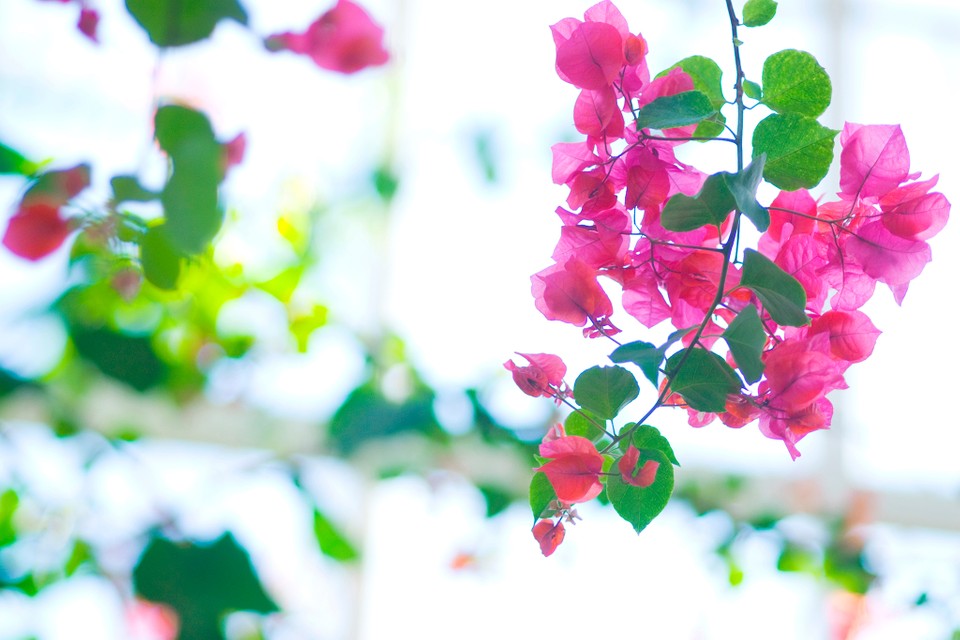
Also, if you have just planted the Bougainvillea plant, we’d recommend that you avoid spraying the soil with fertilizer immediately. Avoid spraying excessive levels of insecticides too since that can impose external stress on the plant.
How to fix it?
The easiest way to prevent all of these environmental factors is by identifying the cause of the issue. Once you know the trigger, it becomes a lot easier for you to implement relevant control measures to eliminate the issue and support the optimal growth of the plant without any compromise.
All you need to do is keep an eye on the foliage and the flowers. If the leaves are turning yellow or dropping from the branches, you need to take immediate measures.
6. Insect infestation
Insect attack is another probable reason that contributes to the damage of the plant. Aphids, spider webs, etc. are common insects that infest and damage the bougainvillea plant for good. Ideally, Aphids are more common in the bougainvillea plants. Since it eats away at the sap, it takes away the quality of the plant and infiltrates it with toxic elements.
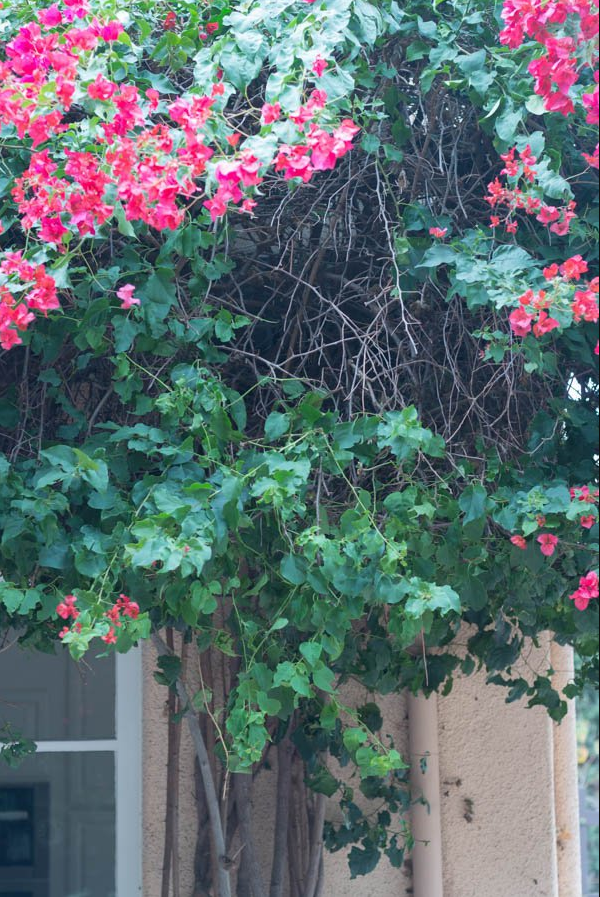
If left to fend for themselves, the aphids will eventually attack the bougainvillea plant for good, leading to the yellowing of the leaves and the flowers. The easiest way to spot an insect infestation is by checking the underside of the leaves since that’s where the insects are mostly located.
How to fix it?
The easiest way to fix the issue is by identifying the kind of insect infestation you are dealing with. Once you know which insect you are dealing with, it becomes a lot easier for you to spray the area with insecticidal sprays to eliminate the pests and insects.
In case you don’t want to spray the area with toxic insecticides, we’d recommend making some homemade DIY spray using neem oil, dish soap, water, etc.
7. Transplant shock
Another underrated issue that most gardeners aren’t aware of is transplant shock. This happens when you initially transfer or plant the bougainvillea plant in a new spot in the garden. It is a very common sign of stress in the plant when it’s unable to adapt to the change in location.
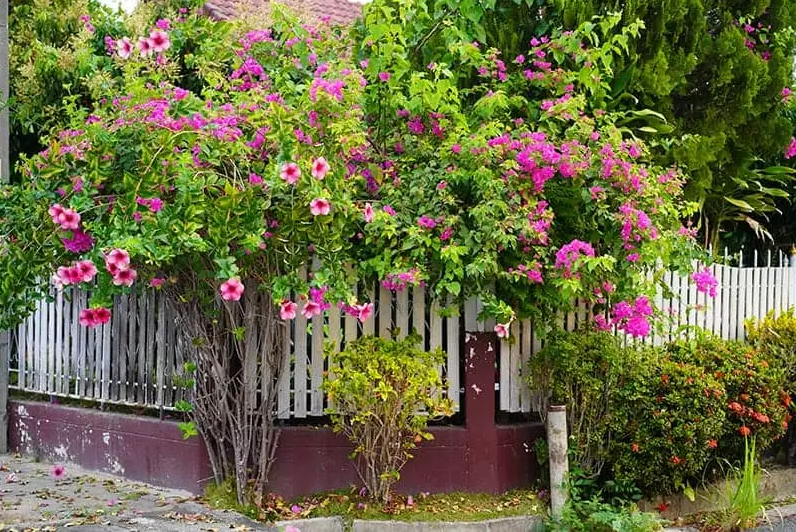
You want to keep certain factors into consideration, including sunlight exposure, watering, airflow, etc. If you fail to sort these factors out, chances are that the leaves will start drooping and eventually fall off the branches.
How to fix it?
Before transferring your newly bought bougainvillea plant to your garden bed, we’d recommend that you prepare the environment and the soil optimally aligned with the needs of the plant. This reduces the stress and allows the plant to grow optimally without any hassle at all.
Conclusion
The bougainvillea plant is subject to a lot of complications, especially regarding the plant’s foliage and flowers. If you aren’t paying enough attention and leaving it to work through the issues, chances are that the plant will eventually die something that no one wants to experience along the way. We hope this article gives you all the insights that you needed to know about the reasons your bougainvillea leaves drop or turn yellow.

![Bougainvillea Dropping Leaves? [360 Degree Solution]](https://www.plantsofmerit.org/wp-content/uploads/2022/08/Bougainvillea-Dropping-Leaves-360-Degree-Solution.jpg)